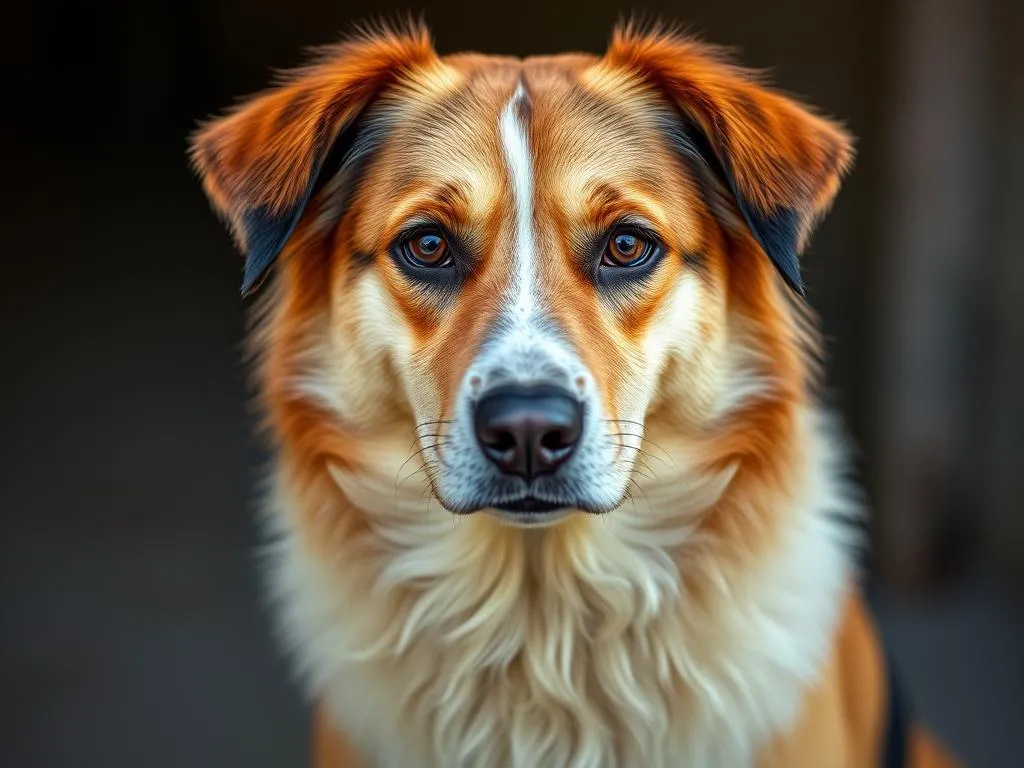
Introduction
Dog ownership in Mexico has seen a significant rise over the years, reflecting a deepening bond between humans and their canine companions. This connection is rooted deeply in the cultural fabric of Mexican society, where dogs are not just pets but also symbols of loyalty and companionship. Understanding the most popular dog breeds in Mexico offers insights into the preferences, lifestyles, and values of Mexican dog owners.
Dogs play various roles in Mexican culture, from family protectors to beloved companions. In this article, we will explore the historical context of dog ownership, modern-day trends, and a comprehensive list of the most favored breeds across the country.
The Role of Dogs in Mexican Culture
Historical Context
The relationship between Mexicans and dogs dates back to ancient civilizations. The Aztecs, for instance, revered the Xoloitzcuintli, also known as the Mexican Hairless Dog, which was believed to guide souls to the afterlife. This breed holds significant cultural importance and symbolizes the historical bond between dogs and the Mexican people.
Modern-Day Pet Ownership
Today, statistics show that about 70% of Mexican households have at least one dog. This surge in dog ownership is a reflection of the growing pet culture, where dogs are seen as family members. The human-animal bond is becoming increasingly important, with many families prioritizing the well-being and happiness of their canine companions.
Dogs in Mexican Festivals and Traditions
Dogs are celebrated in various Mexican festivals, such as the Feast of San Francisco, where animals are blessed. Additionally, many regional celebrations incorporate dog-related activities, highlighting their significance in communal life. The presence of dogs in these traditions emphasizes their role as cherished companions and cultural symbols.
Criteria for Popularity
Factors Influencing Dog Breed Popularity
Several factors influence the popularity of dog breeds in Mexico. Size and temperament are crucial, as many urban dwellers prefer smaller breeds that adapt well to apartment living. Additionally, the climate plays a role; breeds that can withstand heat are favored, particularly in warmer regions.
Lifestyle compatibility also shapes breed preferences. For instance, families may opt for friendly, energetic breeds that enjoy playtime, while singles might prefer smaller, low-maintenance companions.
Surveys and Studies
Various surveys have been conducted to ascertain the most popular dog breeds in Mexico. Institutions such as veterinary associations and pet care organizations frequently analyze pet ownership trends, providing valuable insights into the preferences of Mexican dog owners.
Top 10 Most Popular Dog Breeds in Mexico
Breed Profiles
- Chihuahua
- Origin: Mexico
- Physical Characteristics: Small, with a distinctive apple-shaped head and large ears.
- Temperament: Lively, alert, and often loyal to one person.
- Suitability: Great for families and singles; thrives in small spaces.
-
Care: Requires minimal exercise but needs socialization to prevent over-attachment.
-
Dachshund
- Origin: Germany
- Physical Characteristics: Long body, short legs, and a lively expression.
- Temperament: Curious, brave, and sometimes stubborn.
- Suitability: Good for families; can adapt to apartment living.
-
Care: Needs regular exercise and mental stimulation to prevent boredom.
-
German Shepherd
- Origin: Germany
- Physical Characteristics: Medium to large size, strong build, and an intelligent expression.
- Temperament: Protective, loyal, and highly trainable.
- Suitability: Excellent for families and active individuals.
-
Care: Requires regular exercise and mental challenges; prone to certain health issues.
-
Pit Bull
- Origin: United States
- Physical Characteristics: Muscular build and a short coat.
- Temperament: Loyal, affectionate, and energetic.
- Suitability: Great for families with active lifestyles.
-
Care: Needs regular exercise and socialization; can be stubborn.
-
Golden Retriever
- Origin: Scotland
- Physical Characteristics: Medium to large size with a dense, water-repellent coat.
- Temperament: Friendly, intelligent, and devoted.
- Suitability: Ideal for families and those looking for a companion.
-
Care: Requires regular grooming and exercise.
-
Boxer
- Origin: Germany
- Physical Characteristics: Medium to large size, strong build, and a playful demeanor.
- Temperament: Energetic, loyal, and protective.
- Suitability: Good for active families; needs space to play.
-
Care: Requires regular exercise and social interaction.
-
Beagle
- Origin: England
- Physical Characteristics: Small to medium size, with a keen sense of smell.
- Temperament: Friendly, curious, and merry.
- Suitability: Great for families and active individuals.
-
Care: Needs regular exercise and mental stimulation.
-
Rottweiler
- Origin: Germany
- Physical Characteristics: Large, muscular body with a short coat.
- Temperament: Confident, loyal, and protective.
- Suitability: Best for experienced owners; good with families.
-
Care: Requires regular exercise and training.
-
Schnauzer
- Origin: Germany
- Physical Characteristics: Medium size with a distinctive beard and eyebrows.
- Temperament: Alert, intelligent, and energetic.
- Suitability: Great for families and active individuals.
-
Care: Needs regular grooming and exercise.
-
French Bulldog
- Origin: England and France
- Physical Characteristics: Small, compact body with a short snout.
- Temperament: Affectionate, playful, and adaptable.
- Suitability: Ideal for urban living and families.
- Care: Minimal exercise needs but requires attention to their health.
Breed Ranking
The ranking of these breeds highlights their popularity due to their adaptability, temperament, and compatibility with various lifestyles. The Chihuahua tops the list, being a native breed that resonates with Mexican culture, while the German Shepherd and Golden Retriever are favored for their loyalty and intelligence, making them ideal family pets.
Regional Variations in Dog Breed Popularity
Urban vs. Rural Preferences
In urban areas, smaller breeds like the Chihuahua and French Bulldog dominate due to space constraints. Conversely, rural areas may favor larger breeds like the German Shepherd and Rottweiler, which can provide protection and companionship in more spacious environments.
Regional Breeds
Certain breeds are more popular in specific states. For example, the Xoloitzcuintli holds special significance in central Mexico, while Dachshunds are favored in regions with a more relaxed lifestyle.
Case Studies
In Mexico City, where apartment living is common, the Chihuahua and French Bulldog reign supreme. In contrast, in more rural areas like Jalisco, German Shepherds and Rottweilers are often seen as preferred companions for families seeking guardianship.
Caring for Popular Dog Breeds
General Care Guidelines
Proper nutrition, regular exercise, and routine healthcare are vital for maintaining your dog’s well-being. A balanced diet tailored to your dog’s specific breed and age is essential. Regular vet check-ups help in early detection of health issues.
Breed-Specific Care Tips
Each breed has unique care requirements. For example, Chihuahuas may require dental care due to their small mouths, while Golden Retrievers need regular grooming to manage shedding. Understanding these needs is crucial for responsible pet ownership.
Training and Socialization
Training and socialization are paramount, especially for breeds known for their strong personalities. Enrolling in training classes can be beneficial. Local resources in Mexico, such as dog training schools or community groups, can provide support and guidance.
Adoption and Rescue Organizations
Overview of Dog Adoption in Mexico
The trend of dog adoption in Mexico is on the rise, with many shelters reporting increased interest. Statistics indicate that approximately 30% of dog owners have adopted their pets, reflecting a positive shift towards responsible pet ownership.
Notable Rescue Organizations
Several organizations work tirelessly to rescue and rehabilitate dogs in need. Prominent groups include Adopta una Mascota and Mexican Animal Rescue, which focus on promoting adoption and responsible ownership. Supporting these organizations is crucial in addressing the overpopulation of stray dogs.
Conclusion
The exploration of the most popular dog breeds in Mexico reveals not only the preferences of dog owners but also the cultural significance of these animals in society. From the Chihuahua to the German Shepherd, each breed embodies unique traits that resonate with families across the country. Promoting responsible pet ownership and understanding the specific needs of each breed will ensure a harmonious relationship between humans and their beloved dogs.
FAQs
Common Questions About Dog Breeds in Mexico
What are the best dog breeds for families in Mexico?
Breeds like the Golden Retriever, Boxer, and German Shepherd are excellent choices for families due to their friendly nature and adaptability.
Are there any dog breeds that are not suitable for the Mexican climate?
Breeds with heavy coats, such as Malamutes or Saint Bernards, may struggle in warmer climates and are generally not recommended.
How can I choose the right breed for my lifestyle?
Consider your living situation, activity level, and family dynamics. Researching breeds that match your lifestyle, such as energy levels and grooming needs, can guide your decision.









